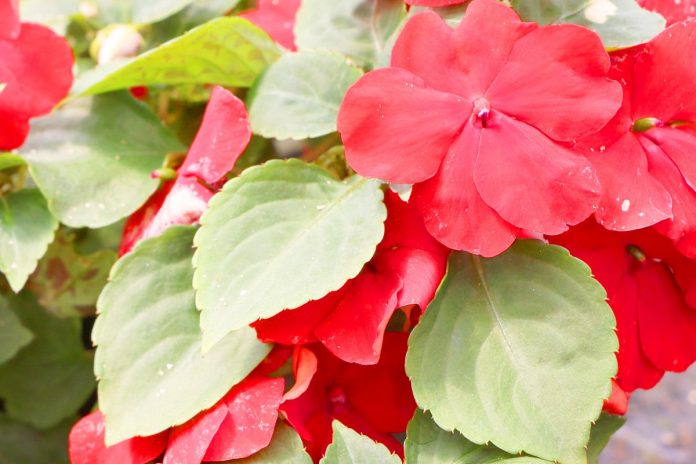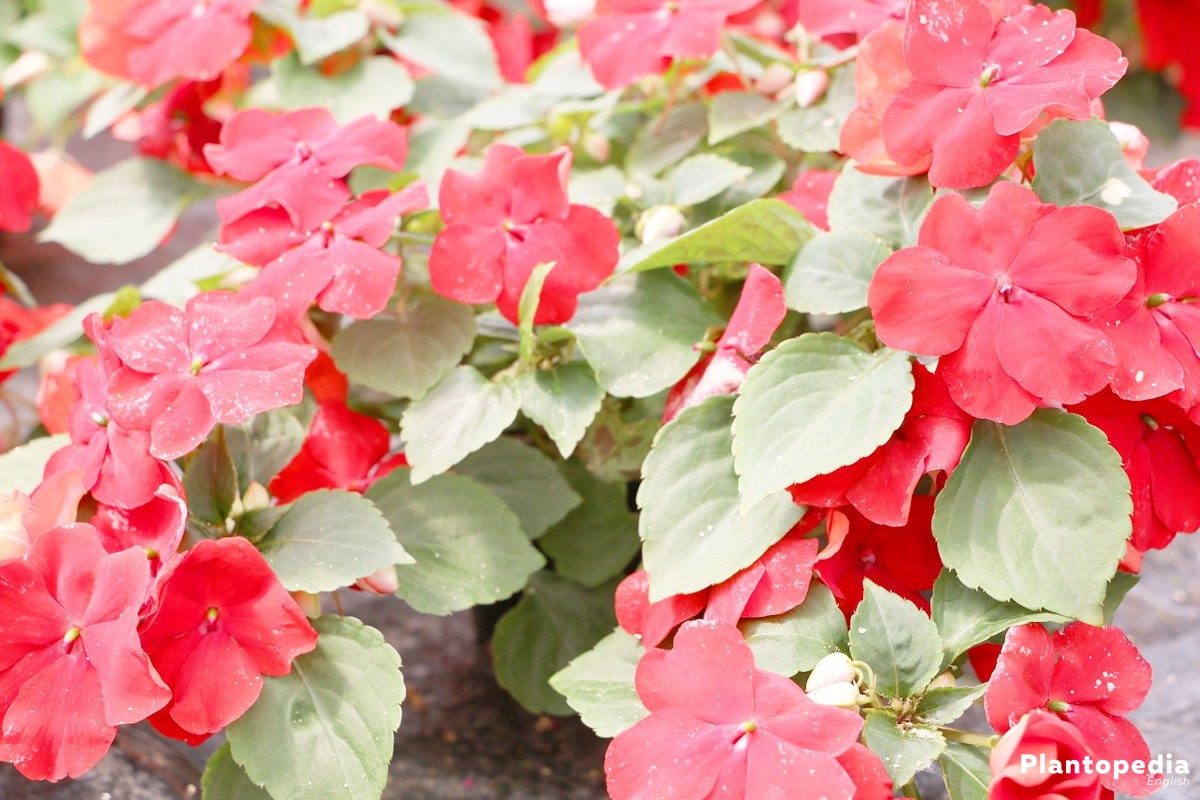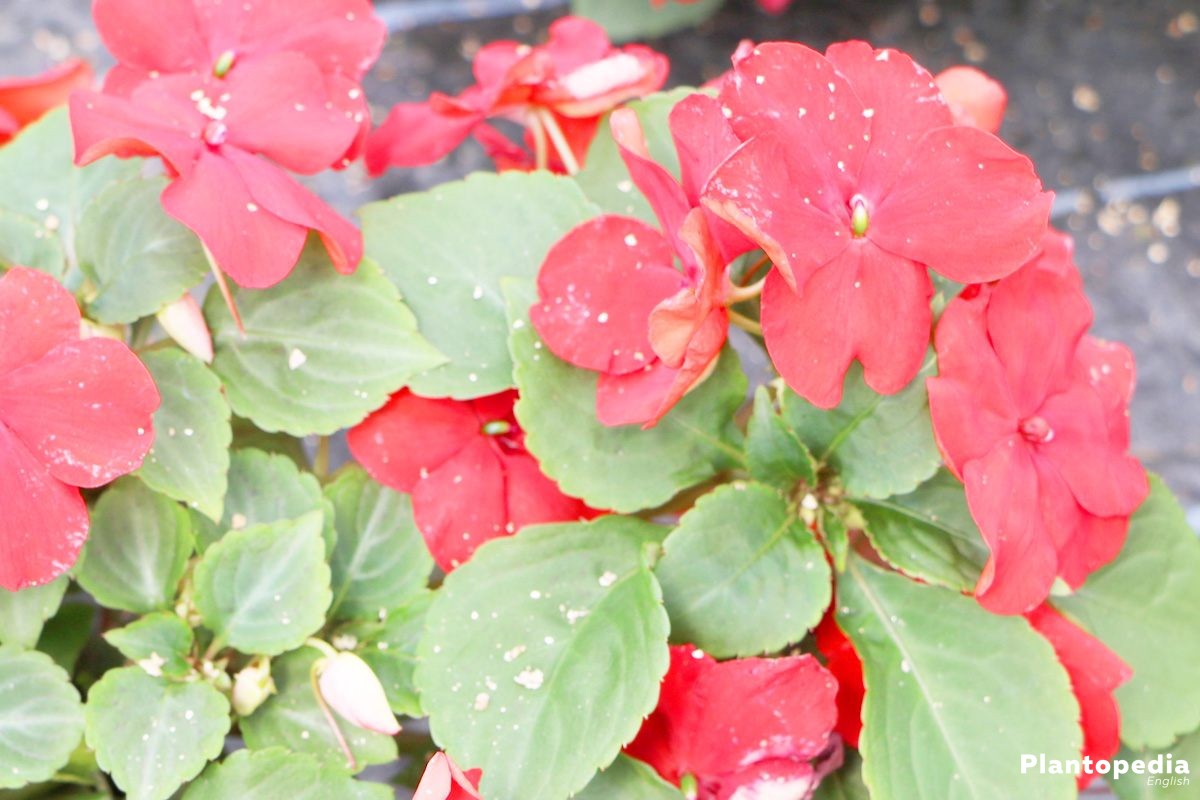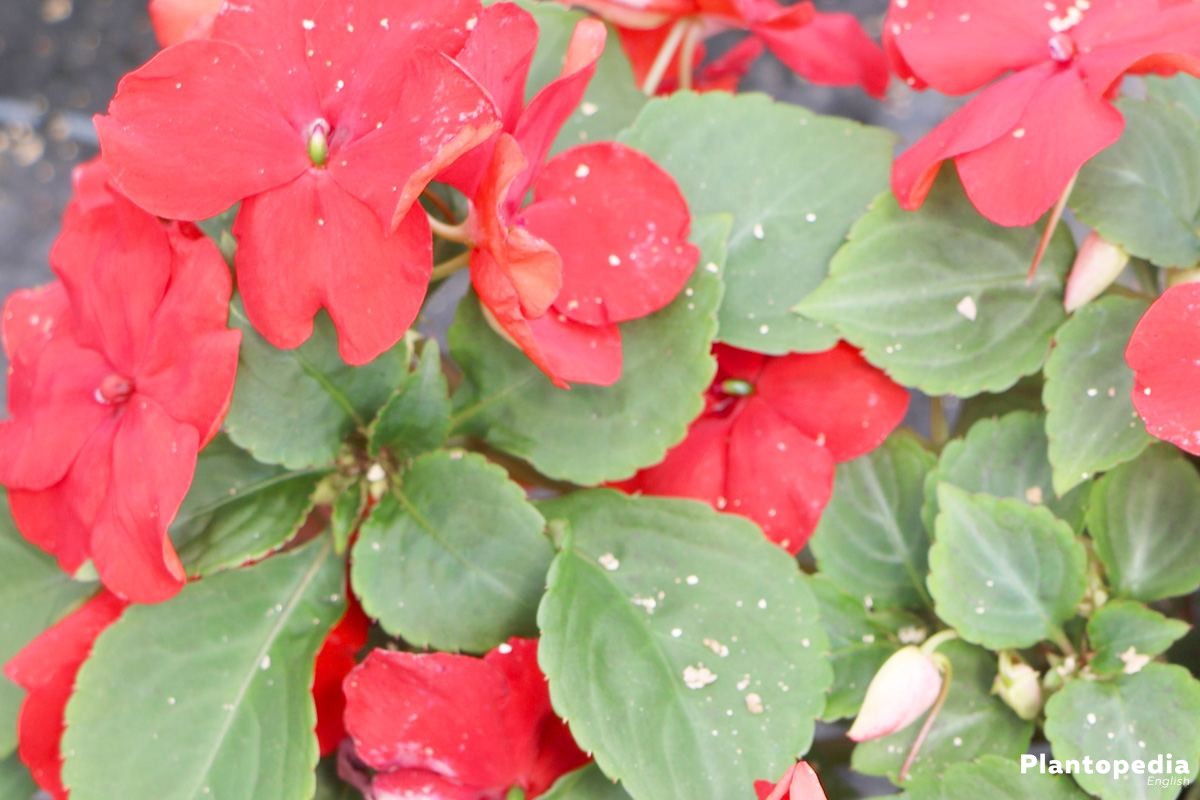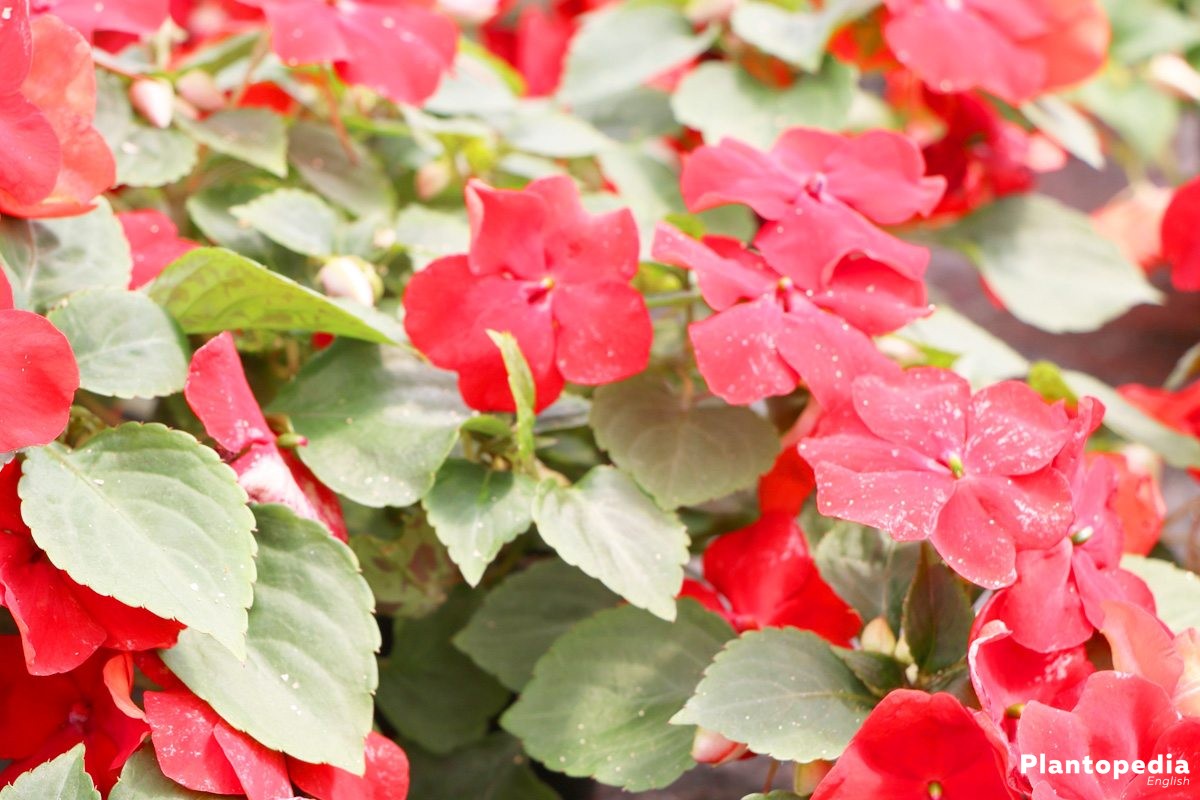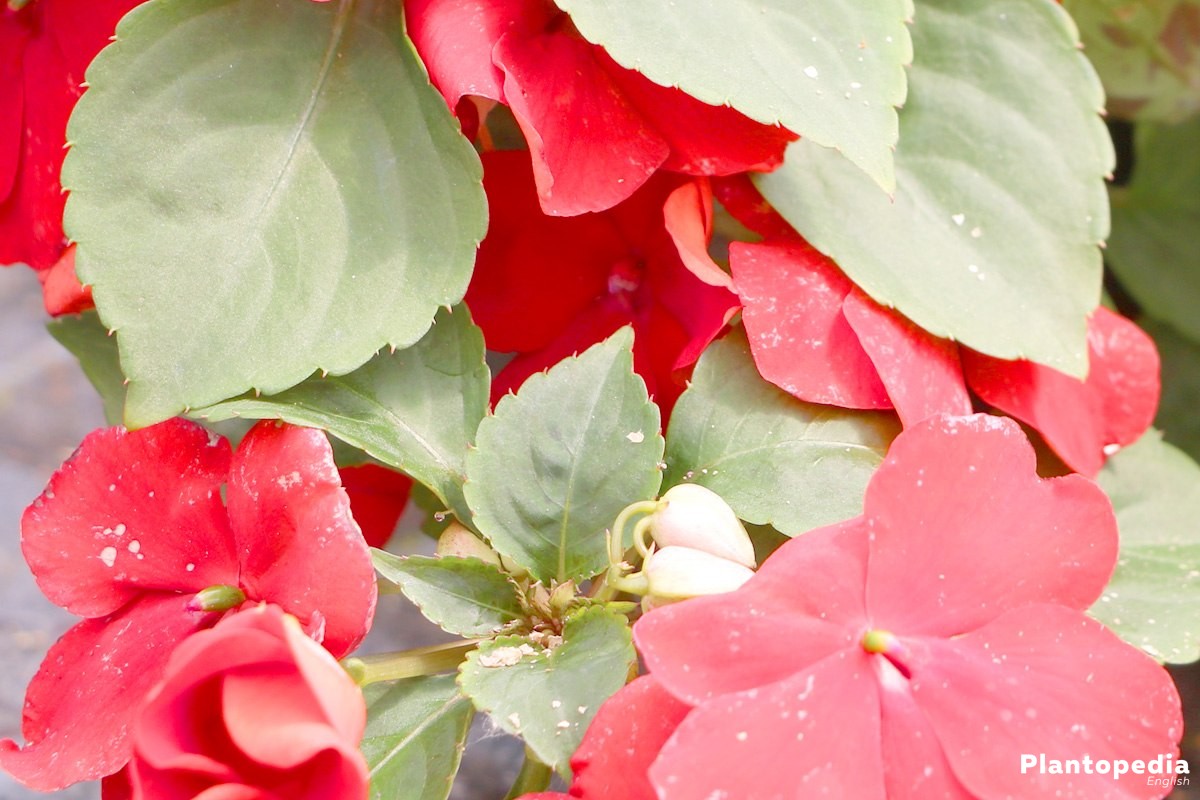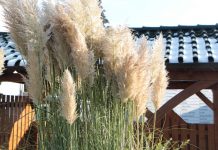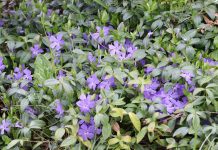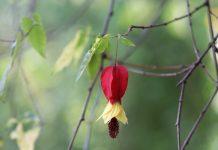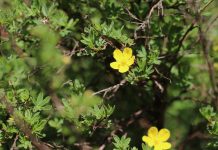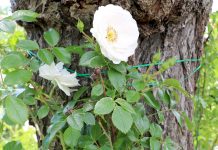The busy Lizzie is a very popular guest in homely flower beds, on balconies, around traffic lights or in flowerpots. The decorative plant blooms for a long time and intensively and rewards good caretaking with a grand blossoming. The care instructions explain all that is important for professional care of the Impatiens Walleriana and shows how you can best optimize the growth and bloom without great effort.
Plant Profile
Contents
- Plant family: Balsaminaceae
- Genus: Impatiens
- Order: Ericales
- Trivial names: Balsam, Sultana, Impatiens
- Origin: East and south-east of Africa
- herbaceous, strong plant with a bushy growth
- Height of growth: 20 to 40 centimeters, sometimes up to 70 centimeters
- simple, half-filled or fully filled out blossoms in white, orange, red, rose, violet or pink
- blossoming from May until October
- changeable, oval, evergreen leaves
- frost-sensitive and mostly growing for one year
The busy Lizzie truly brings honor to her name: The comparatively easy care decorative flower blossoms during the whole summer until the start of fall without pause and thus stays busy for the whole time. Numerous blossoms in shining colors, lying closely next to each other, decorate the bushy Impatiens Walleriana and form a colorful contrast to the juicy-green foliage.
The frost-sensitive plant originates in the east and south-east of Africa and mostly grows for one year. In these care instructions you come to know under which conditions it grows best and produces the largest amount of blossoms.
The Impatiens Walleriana came to Europe at the end of the 19th century, originating in the east and south-east of Africa. Today the blossoming of plants on balconies, terraces and gardens is not imaginable without it.
Care
The amount of care needed for the Impatiens Walleriana is moderate. If a few aspects regarding the plant’s care are attended to, it will be possible to enjoy the blossoming decorative flower during summer and fall.
Location
The Impatiens Walleriana prefers light shadow or locations in semi-shadow. Direct exposition to the sun causes burns on the sensitive plants; a location too dark on the other hand harms the blossoming. The location should also be protected from wind. Temperatures between 20 and 24 degrees Celsius are ideal for growth.
Substrate
The Impatiens Walleriana flourishes best in loose, humid and permeable substrate. Regular flower soil is generally sufficient. A substrate that is low in nutrients can be improved by adding some compost to increase the permeability and make it higher in nutrients.
Plants
The busy Lizzie is classified as a summer flower and is sensitive to cold, which is why it is only to be planted after the last frost of the winter. It is best to be planted starting from the mid of May. For this, especially healthy and strong plants, which have already developed some blossoms, are advised to be used. Several plants should be planted, each 20 to 30 centimeters apart from the next.
For those who want to plant their Impatiens Walleriana in a flower box or a pot it is advised not to choose one that is too large. In smaller containers, the roots of the flower are closer to each other, which makes the plant develop more blossoms.
Watering
The busy Lizzie consumes quite a lot of water. For this, the plant is also called “Süüfferli” in Switzerland, which roughly translates as “drinker”. The substrate should always be kept moist. The watering should be done regularly, as neither dryness nor superfluous water is good for the plant. Thus, if the flower is placed on a balcony or in a pot, a water-permeable pot or container should be chosen, so that superfluous water can drizzle out.
If the temperature rises above 25 degree Celsius during a long period of time, that can be harmful to the sensitive leaves. In case of such temperatures, it is advisable to spray the flowers with some water. The blossoms should be kept from the water’s direct impact as much as possible.
Fertilizer
The Impatiens Walleriana reacts sensitive to large amounts of fertilizer, which is why it is enough to give the plants some fluid fertilizer every two weeks. A product with a low dose of fertilizer is advisable. Through this, the blossoming will be additionally stimulated.
After blossoming
Withered blossoms can be plucked off the plant, which stimulates growth of new blossoms. If the Impatiens Walleriana is completely withered, it can be removed from the substrate and be thrown into the ecological trash or be composted.
Wintering
The Impatiens Walleriana is usually cultivated for the period of one year. Ambitious amateur gardeners can however try to let the flower overwinter in the house and thus prolong its lifespan for a further year. Many specimens of the Impatiens Walleriana even continue blossoming in their wintry home.
As soon as the outside temperature goes consistently below 10 degree Celsius or less, the plant must be brought inside. This is mostly the case during September. Plants in a flower bed should be removed from it and put in pots, while potted plants, balcony flowers and similar arrangements are supposed to be moved into the winter quarters as they are.
With the following conditions, a decorative flower has good chances to survive the winter:
- it needs a well-lit location
- the basement or other dusky places are inappropriate
- the room does not need to be heated, but should be warmer than 10 degrees
- ideally, the temperature should be between 10 and 15 degrees
- the Impatiens Walleriana should not be fertilized under any circumstances while it is resting during the winter
- the plant must be watered only moderately
A light, cool winter quarter could for example be the following:
- a conservatory
- a hallway
- a staircase
- a window ledge
From the mid of May, when the temperatures are not consistently under 10 degrees anymore, the Impatiens Walleriana can be brought back outside. It should best be put into a new pot or be planted into a flower bed. The fresh substrate helps the busy Lizzie to renew its growth.
Multiplication
In spring it is usually possible to buy strong, young specimens of the Impatiens Walleriana at garden shops, discounters or at other vendors for a fair price. For those who wish to cultivate their own busy Lizzies however, there are two possibilities. These are seeds and cuttings. In the month of May of the year following the planting of such cultivated specimens, they can be moved outside into a flower bed or put into their own pot.
Seeds
The Impatiens Walleriana develops seed capsules which grow to be 1.5 to 2 centimeters in size. As soon as they are mature, the light green capsule directly opens already at a light touch and spreads its seeds explosively in the surrounding area. If one wants to grow their own busy Lizzies they should thus be careful.
It is best to reap the seed capsules shortly before they mature. To do this, the capsules should be grabbed quickly and completely engulfed by the hand and consequently be cut off from the plant. To make it possible for them to mature afterwards, the seeds should be placed in a tall, open container and be placed in a warm and dry spot of the house.
Sowing
Reaped or bought seeds should be sown between February and March. For this, a pot should be filled with cultivation soil and the seeds be placed on top of it. The seeds should not be covered by substrate, as the Impatiens Walleriana sprouts in light. The pot is afterwards best placed on a window ledge. The seeds sprout most quickly at temperatures between 16 and 18 degree Celsius.
Cuttings
The Impatiens Walleriana is eager to grow and can also be multiplied via its branches.
- remove one branch from the main plant
- remove all leaves on the lower third of the branch
- fill a small pot with some cultivation soil and put the cutting in it
- water the cutting and make sure that the soil stays slightly moist at all times
- put the pot in a well-lit location, ideally with both morning and evening sunshine
The pot should afterwards be covered with a transparent cover, or alternatively, a small plastic bag. Through this, a moist, warm climate is created, which stimulates growth. The substrate is also additionally kept moist through this measure, which is highly advisable. After approximately three to four weeks, when the first roots start to build, the cover can be removed.
Alternatively, the cutting can be grown in a room conservatory. Principally, the busy Lizzie can be multiplied with cuttings throughout the whole year. The best time to cut off branches is during fall, however, so that the cutting has time to grow until the coming spring.
Vermin
The robust Impatiens Walleriana is relatively resistant against vermin. It is, however, susceptible to vermin if mistakes are made in taking care of the plant, for example by giving it too much water. Those cases are however easily resolved.
Aphids
The aphid, one of the most common vermin types in gardens, is not stopping at the Impatiens Walleriana. The insects, which are a few millimeters in size, mostly sit on the leaves’ undersurface and can be distinguished by plain eyesight. An infestation is noticeable due to sticky honeydew.
The infested plant should be sprayed immediately and thoroughly from all sides with stinging nettle slurry or with a mixture of water and curd soap. After two to three days the treatment should be repeated. The procedure should be repeated until no aphids are discernable anymore.
Red Spider
If the Impatiens Walleriana is exposed to warm and dry air for a longer period of time, it can be infested by red spiders. These are approximately 0.6 millimeters in size and mostly visible only through lenses.
They are recognized through the following symptoms:
- the leaves are coated with fine webs
- small, light stains show up
- the leaves turn yellow at a later stage, until they then turn brown and wither
The plant should first be sprayed with warm water, which removes part of the spiders from the leaves. After this, the busy Lizzie should be sprayed with a conventional plant protection spray. This procedure should be repeated after two weeks.
Diseases
Young plants develop a disease in which the plants damp off. This is caused by soil fungi which kill the busy Lizzie. Infested plants cannot be saved from this. Before placing a new plant in the soil, the latter should be treated with fungicides. Alternatively, the soil that is infested should be spaciously replaced with fresh substrate.
With the following measures this disease can be prevented:
- the use of seeds that are treated with fungicides
- the young plants should not be placed too close to each other
- waterlogging should be prevented
- the Impatiens Walleriana should only be watered each time that the upper range of the soil is dry
- substrate that is not very permeable also helps the spread of hazardous soil fungi
- the substrate should be enriched with compost if needed
Varieties
The wide range of types and different cultivated variations of the busy Lizzie add to its popularity. There are over a thousand variations all over the globe. They differ especially in regards to color, but also pattern and shape of the plant’s blossoms. At this point, an overview of the most popular variants of the Impatiens Walleriana is given.
Impatiens Walleriana Victorian Rose
With their blossoms filled by half in dark red and dark pink color variations the Victorian Rose type is reminiscent of roses. The decorative plant grows up to 20 centimeters high and has dark green leaves.
Impatiens Walleriana Blackberry Ice
The Blackberry Ice version is defined by its fully filled out blossoms in intense fuchsia color. The green leaves sometimes have a decorative yellow edge. The plant grows up to 30 centimeters high.
Impatiens Walleriana Candy (series)
The Impatiens Walleriana is impressive due to its especially large blossoms with five blossom leaves each. This compactly growing variation is a series, which includes several cultivation variations with differing blossom colors. The busy Lizzies of the Candy type grow in red, white, violet, light rose, orange, salmon and neon orange.
Impatiens Walleriana Tempo (series)
A further variation of the plant is the Tempo variation. This Impatiens Walleriana grows particularly bushy and gets up until 25 centimeters high. Its unfilled blossoms are, among other colors, mostly white, orange, red and pink. Some variations of the Tempo series have blossom leaves in two colors.
Impatiens Walleriana Fiesta (series)
The busy Lizzie of the Fiesta series has extensive leaves, which are filled out and ruffled. This series, too, is distinguished by its wide color variation. The cultivated plants are available in red, pink and rose, among others. The variation grows carpet-like and reaches a maximum height of 40 centimeters.
Impatiens Walleriana Elfin
Unfilled blossoms are a characteristic of the Elfin variant, while they reflect light intensively. Apart from red, white, rose, salmon and pink blossoms there are also multi-colored variations. The decorative plant grows up to 25 centimeters high and was cultivated first in Costa Rica.

